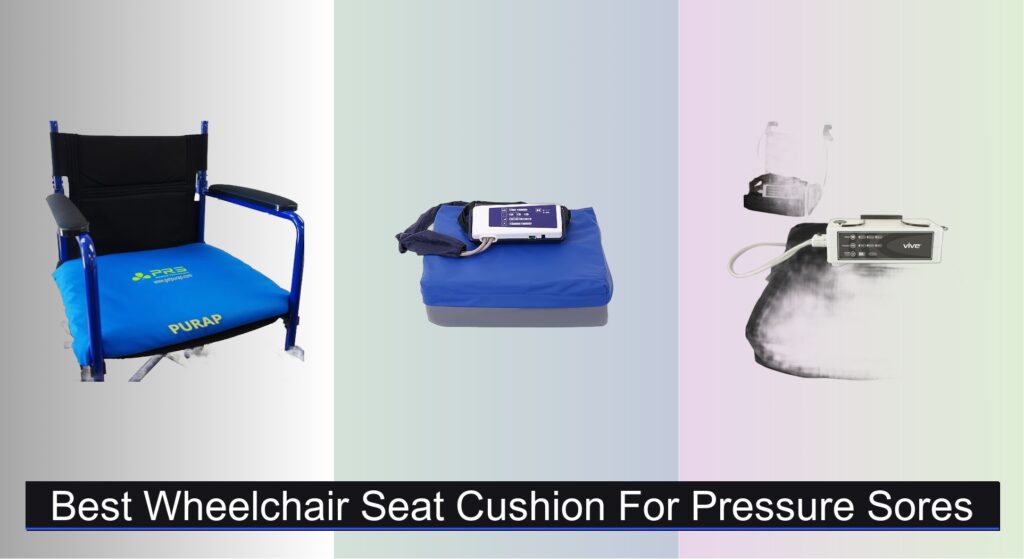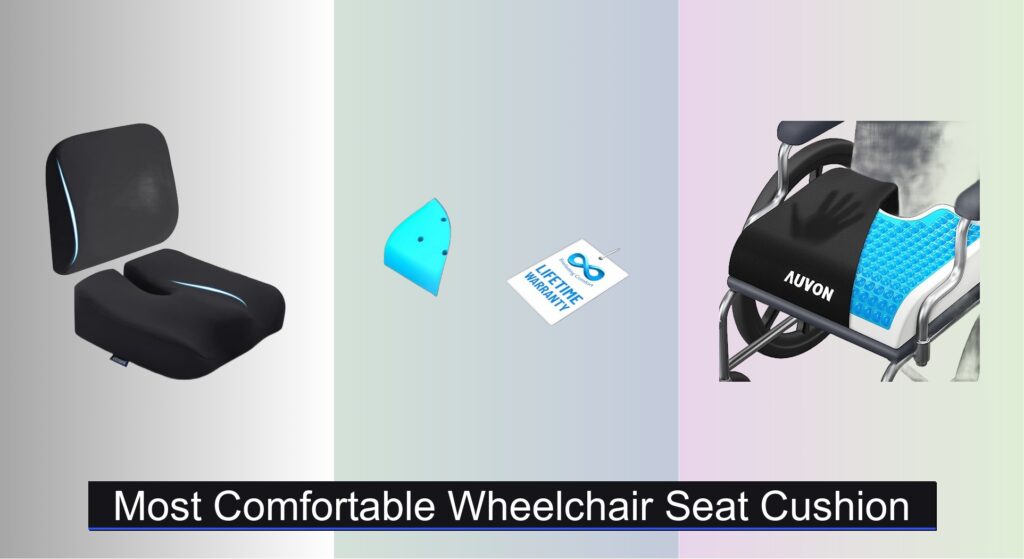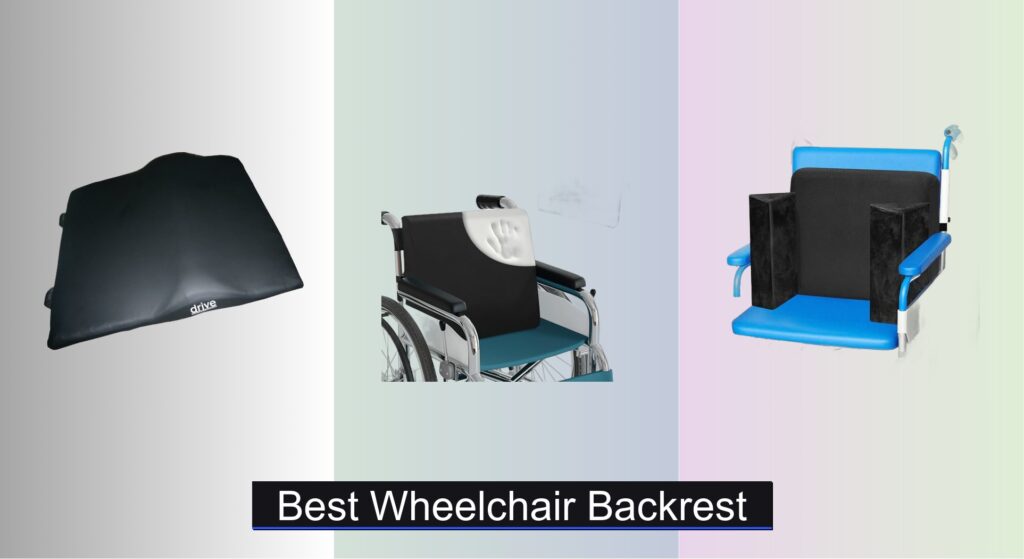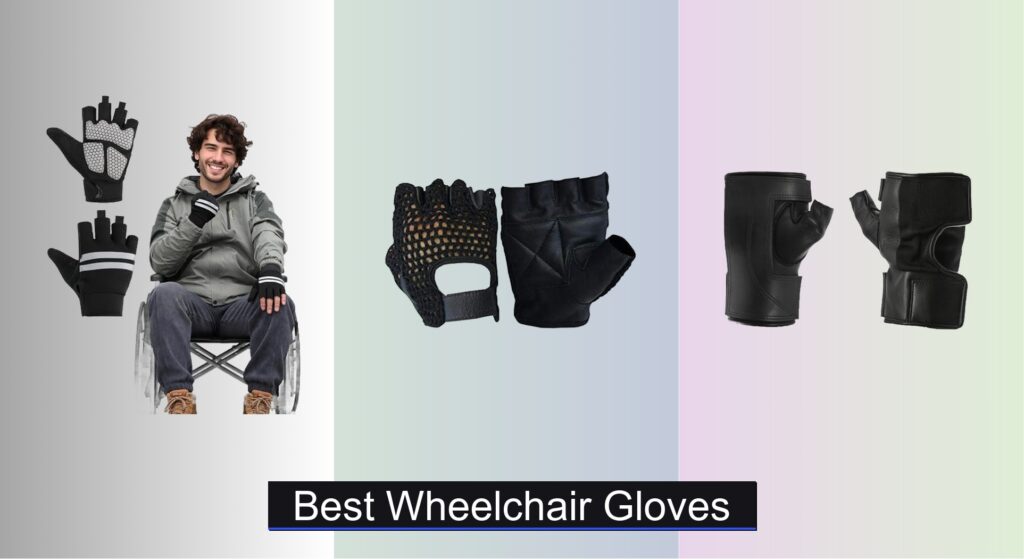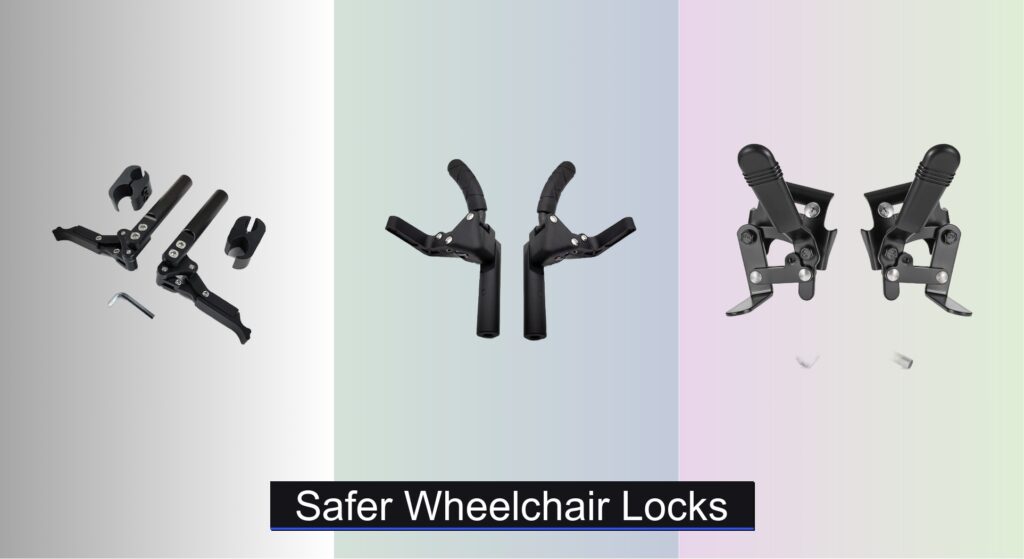For individuals who use wheelchairs daily, prolonged sitting can lead to dangerous pressure sores—painful, slow-healing wounds that commonly develop on the tailbone, hips, and sacrum. These injuries stem from unrelieved pressure cutting off blood flow, making the right wheelchair seat cushion for pressure sores not just a comfort upgrade, but a medical necessity. Poor weight distribution, heat buildup, and inadequate support only heighten the risk, especially for those with limited mobility or sensation.
To find the most effective solutions, we evaluated the best wheelchair seat cushion for pressure sores by analyzing clinical research, pressure-mapping studies, and real-world user feedback across dozens of models. Our top picks prioritize superior pressure redistribution, breathability, and customizable support—balancing advanced technologies like fluid, air, and gel-infused foam with practical features like washable covers and portability. Keep reading to discover the cushion that best matches your needs and lifestyle.
Best Options at a Glance

PURAP Liquid + Air + Foam Cushion
Best Overall
- Fluid 3D Flotation
- Liquid + Air + Foam
- 18 x 20 x 1.5 in
- Bed sore prevention
- Thin, flat, flexible

Alternating Pressure Air Cell Cushion
Best for Active Pressure Relief
- Pressure sore, tailbone pain
- 17x17x5″
- 350 lbs
- Alternate, Static
- Waterproof PVC, polyurethane

Vive Alternating Pressure Pad
Best for Long-Term Medical Use
- 220 lbs
- 8 hours
- 18″ & wider
- 3+
- Waterproof, removable

Airbag Wheelchair Cushion with Ventilation
Best for Breathability
- 3D “U”-shaped
- Self-adaptive
- Waterproof Lycra ice silk
- 18″ x 16″ x 3″
- Up to 220 lbs

Gel Seat Cushion Super Large
Best Budget Friendly
- 19″ long ” 17.92″ wide
- Cooling gel
- Honeycomb breathable
- Coccyx & sciatica
- Removable & washable

CYLEN Gel Infused Memory Foam Cushion
Best for Comfort and Support
- 18″ x 17″ x 3″
- Gel-infused memory foam
- High dense polyfoam
- Breathable mesh
- Non-slip base

ROHO Mosaic Inflatable Cushion
Best for Custom Fit
- 315 lbs
- 18″ x 16″
- Polyvinyl
- Stretchable, breathable
- Non-skid

C CUSHION LAB Extra-Dense Memory Foam
Best for Posture Support
- Extra-dense charcoal memory foam
- Pressure relief
- Ergonomic contour
- Office/Home/Car/Wheelchair
- Light Grey
Best Wheelchair Seat Cushion For Pressure Sores Review
How to Choose the Right Wheelchair Seat Cushion for Pressure Sores
Choosing the right wheelchair seat cushion is crucial for preventing and healing pressure sores, maximizing comfort, and improving overall quality of life. With a wide variety of options available, understanding key features and how they address your specific needs is essential. Here’s a breakdown of important factors to consider:
Pressure Relief & Cushion Technology
The primary goal of a pressure relief cushion is to redistribute weight and minimize pressure on vulnerable areas like the tailbone, hips, and sacrum. Different technologies achieve this in different ways:
- Fluid/Air/Foam Combinations: Cushions like the PURAP Liquid + Air + Foam cushion utilize multiple layers to offer exceptional pressure redistribution. The fluid and air layers conform to the body’s contours, while foam provides support. This combination is often considered the most advanced for serious pressure sore prevention and healing, offering unparalleled comfort.
- Alternating Pressure: Cushions such as the Alternating Pressure Air Cell Cushion and Vive Alternating Pressure Pad use alternating air cells to continuously shift pressure points. This promotes blood flow and prevents prolonged pressure on any single area. These are ideal for users who spend long periods seated and require active pressure relief. Consider the cycle time options (available on some models) to find what feels most comfortable.
- Gel Infused Memory Foam: Gel seat cushions (like the Gel Seat Cushion Super Large and CYLEN Gel Infused Memory Foam Cushion) offer a balance of comfort and support. The gel helps dissipate heat and conforms to the body, providing cushioning. However, they may not offer the same level of pressure redistribution as fluid or alternating pressure systems.
- Air Chambers: Airbag Wheelchair Cushions with ventilation use air chambers to distribute weight and improve circulation, making them breathable.
Cushion Profile & Fit
The shape and dimensions of the cushion significantly impact its effectiveness and comfort.
- Thickness: Thicker cushions generally provide more cushioning, but can also affect wheelchair maneuverability and transfer height. Consider your specific needs and wheelchair type.
- Width & Depth: Ensure the cushion is wide and deep enough to provide full support for your buttocks and thighs, extending beyond your body weight bearing areas. Cushions are typically designed for wheelchair seats 18” and wider.
- Contouring: Some cushions have contoured shapes, while others are flat. Flat cushions (like the PURAP) are often preferred as they allow for more natural movement and don’t restrict positioning. Contoured cushions may offer more targeted support but can sometimes create pressure points.
Additional Features to Consider
- Breathability: Features like ventilation channels (Airbag Wheelchair Cushion) or breathable cover materials (C CUSHION LAB) help prevent heat buildup and moisture, reducing the risk of skin breakdown.
- Cover Material: Look for waterproof and washable covers for easy cleaning and hygiene, especially important for incontinence.
- Portability: If you need to transport the cushion, consider its weight and whether it comes with a carry handle.
- Adjustability: Alternating pressure cushions often offer adjustable settings for pressure levels and cycle times, allowing you to customize the support to your needs.
- Weight Capacity: Ensure the cushion’s weight capacity meets your requirements.
Wheelchair Seat Cushion Comparison for Pressure Sores
| Product | Pressure Relief Technology | Best For | Weight Capacity (lbs) | Cover Material | Portability | Price Range (approx.) |
|---|---|---|---|---|---|---|
| PURAP Liquid + Air + Foam Cushion | Fluid, Air & Foam Layers | Best Overall | Not Specified | Not Specified | Moderate | $200 – $300 |
| Alternating Pressure Air Cell Cushion | Alternating Air Cells | Active Pressure Relief | 350 | Waterproof PVC & Polyurethane | Good (with pump bag) | $100 – $200 |
| Vive Alternating Pressure Pad | Alternating Air Cells | Long-Term Medical Use | 220 | Waterproof, Removable | Moderate (with hooks) | $80 – $150 |
| Airbag Wheelchair Cushion with Ventilation | 3D Air Chambers | Breathability | 220 | Washable Lycra Ice Silk | Good (built-in handle) | $60 – $120 |
| Gel Seat Cushion Super Large | Cooling Gel Core | Budget Friendly | Not Specified | Washable Cover | Moderate | $30 – $60 |
| CYLEN Gel Infused Memory Foam Cushion | Gel Infused Memory Foam | Comfort & Support | Not Specified | Breathable Mesh, Washable | Moderate | $50 – $100 |
| ROHO Mosaic Inflatable Cushion | Interconnected Air Cells | Custom Fit | 315 | Stretchable Standard Cover (Washable) | Excellent | $150 – $250 |
| C CUSHION LAB Extra-Dense Memory Foam | Extra-Dense Charcoal Memory Foam | Posture Support | Not Specified | Not Specified | Moderate | $40 – $80 |
How We Tested & Analyzed Wheelchair Seat Cushions for Pressure Sores
Our recommendations for the best wheelchair seat cushion for pressure sores are based on a multi-faceted approach prioritizing data-driven analysis and understanding the needs of individuals at risk. We evaluated options using a combination of publicly available clinical research, user reviews, and detailed feature comparisons.
Specifically, we analyzed studies focusing on pressure mapping technologies to understand how different wheelchair seat cushion materials – including foam, gel, air, and fluid combinations – redistribute pressure. We cross-referenced this with user feedback from online forums and retailer sites, focusing on reports of pressure sore development or healing while using specific models.
Our analysis considered key features detailed in the buying guide, such as cushion profile (thickness, width, contour), breathability, cover material, and adjustability. We prioritized cushions demonstrating superior pressure redistribution capabilities, as evidenced by research and positive user experiences, with an emphasis on options suitable for prolonged sitting and varying levels of risk for developing pressure injuries. We also assessed the alignment of product claims with independent testing data where available, and focused on options offering adjustable features to cater to individual needs.
FAQs
What is the best type of wheelchair seat cushion for preventing pressure sores?
The best wheelchair seat cushion for pressure sores depends on your individual needs, but cushions utilizing fluid, air, and foam combinations (like the PURAP) generally offer the most advanced pressure redistribution and are often recommended for high-risk individuals. Alternating pressure cushions are also excellent for active pressure relief.
How thick should a wheelchair seat cushion be for pressure relief?
Cushion thickness varies, but a thicker cushion isn’t always better. Consider your wheelchair type and personal needs. A cushion should adequately support your buttocks and thighs without affecting maneuverability or transfer height.
What materials are most breathable for a wheelchair cushion?
Breathable materials like those found in the Airbag Wheelchair Cushion with ventilation, or covers made from breathable mesh, help prevent heat and moisture buildup, reducing the risk of skin breakdown. Look for features like ventilation channels.
How do I ensure a wheelchair seat cushion fits properly?
Ensure the cushion is wide and deep enough to fully support your buttocks and thighs, extending beyond your weight-bearing areas. Most cushions are designed for wheelchair seats 18” and wider. A proper fit is crucial for effective pressure relief.
Final Thoughts
Ultimately, selecting the best wheelchair seat cushion for pressure sores is a personal decision. Carefully consider your individual needs, the amount of time you spend seated, and your risk level for developing pressure injuries when evaluating the options discussed.
Investing in a high-quality cushion and prioritizing proper fit can significantly improve your comfort, protect your skin, and enhance your overall quality of life. Don’t hesitate to consult with a healthcare professional for personalized recommendations tailored to your specific situation.

